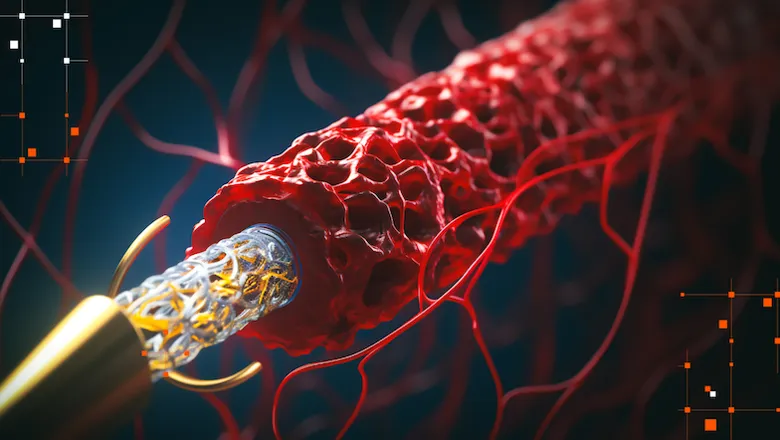AI-driven robotic systems have the potential to increase procedural precision, thereby improving overall navigation performance (i.e., speed and accuracy of moving wires and catheters into the correct blood vessel branch) and reducing complication rates.
Harry Robertshaw, PhD Candidate, School of Biomedical Engineering & Imaging Sciences.
29 August 2023
New review explores role of AI in autonomous navigation of endovascular interventions
Researchers from King’s College London have comprehensively analysed the use of Artificial Intelligence applied to surgeries involving endovascular interventions, setting the stage for future research and development in the field.

Endovascular intervention is a procedure wherein a device navigates blood vessels to reach the surgery site; the method is commonly used in vascular and cardiovascular disease treatment, such as clot removal in stroke patients.
The systematic review investigated studies exploring the use of rapidly advancing AI technology in the autonomous navigation of catheters and guidewires that assist with such procedures.
In surgeries requiring endovascular intervention, robots have the potential to guide a catheter or guidewire inside the blood vessels of the patient. The robot has to navigate a complex network of blood vessels to reach the area that requires treatment. AI can be trained using data from experts who have performed the procedures before to act as the ‘brain’ of this robot and decide the actions it should take to get to the target site.
Researchers recommended that establishing reference and minimum reporting standards would allow for an effective comparison of different AI methods to determine the most effective model for the procedure.
While the technology is still in the early stages of development, it could result in better surgery outcomes, reduced operation times, enhanced decision-making, and decreased operator radiation exposure when improved.
AI-driven robotic components may prove to make robots safer than those without such components. If proven to be safe, AI-driven robotic systems could be set up in hospitals nationwide and tele-operated remotely from a central location. The result would be an increase in the speed of access to treatments beyond what is possible currently in many parts of the UK and other countries.
Dr Thomas Booth, Reader in Neuroimaging, School of Biomedical Engineering & Imaging Sciences.
Read the full paper, Artificial intelligence in the autonomous navigation of endovascular interventions: a systematic review, published in the Frontiers in Human Neuroscience journal.


